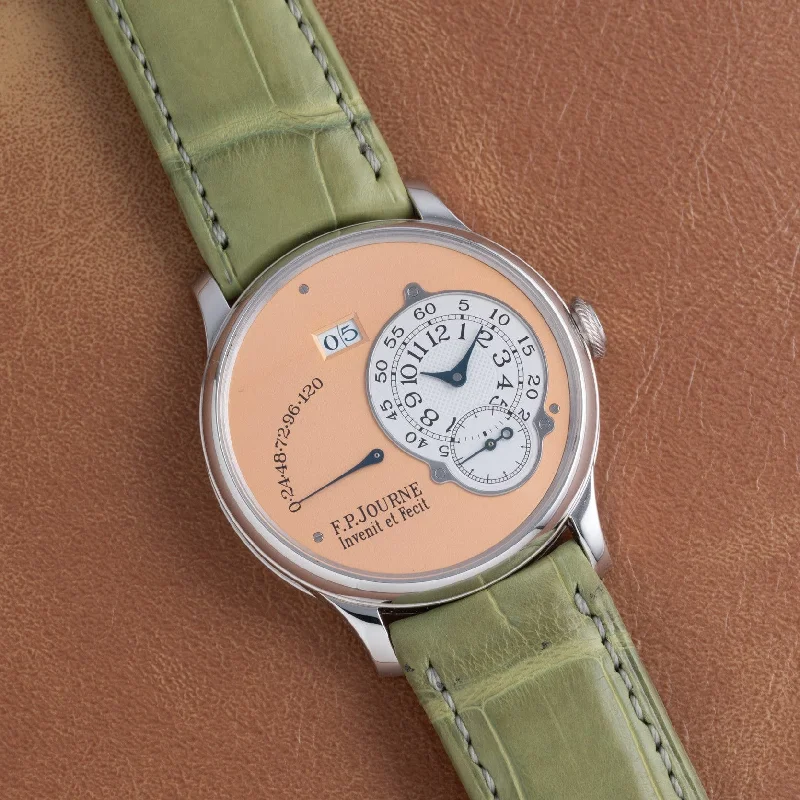So you’ve bought a Patek, maybe an Audemars Piguet, a few Rolexes or a Vacheron Constantin. You think you’ve seen it all and are ready to move on to spicier horizons, and then you stumble on F.P. Journe.
Arguably the father of the modern independent watchmaking renaissance, Journe has paved the road for countless other small manufactures to make a name for themselves and share their creative eye with the industry. Journe’s legacy truly extends far beyond the watches he’s designed and executed.
Leaving school early to study horology, and working in his uncle’s clock repair shop, Journe discovered his knack for all things horology at a young age. Studying the works of Breguet and George Daniels, Journe had an eye for complication and classicism which would go on to influence the look of his later creations.
After completing his studies and designing a number of commissioned pieces for private clients, Journe decided to set out on his own crafting wristwatches. Never slacking off, his earliest designs were tourbillons with constant force remontoirs — mechanically sophisticated and extremely difficult to execute. The ambitious young watchmaker was already punching above his weight, and by the time he started his own eponymous brand, collectors were already getting excited about Journe’s promise.
The Octa Reserve de Marche, introduced in 2001, was the first watch released with automatic winding and over 120 hours of power reserve. A guilloché dial center, Journe’s own typeface on the dial, and the funky layout of the watch all come together to present a luxurious, but distinctive look.
While the Octa Reserve is a great watch no matter the configuration, this particular piece is simply screaming for the Journe enthusiast. Firstly, this piece is a 38mm Octa Reserve. Produced only until 2005, these smaller Octa Reserves are especially desirable. Today, Octa collection watches are only made in 40 and 42mm configurations. While these sizes are fantastic for many clients, the 38mm variants allow those with smaller wrists to enjoy the watch. Furthermore, because of the broad lug profile, the watch doesn't look or feel out of place on a larger wrist at all. As a result, these early, rare 38mm offerings always are a bit more special.
If you’re not sold yet, that’s not all this piece has going for it. Additionally, while all Journe movements from around 2004 on were made of rose gold, this piece features one of Journe’s early brass movements. This is yet another point that will get Journe enthusiasts extremely excited. This piece is analogous to an Enzo Ferrari era Ferrari. It is the earliest, purest representation of everything that was F.P. Journe in the late 20th century and into the early 2000s.
Adorned with a 18K rose gold dial, this piece features a power reserve indicator at 9 o'clock, displaying its impressive 120 hours of power reserve, outsized date at 11 o'clock, and time at 3 o'clock.
In actuality, the watch will remain running for closer to 180 hours. Journe only advertised 120 hours because he wanted to display power for the portion of reserve that the watch would maintain extreme timekeeping precision.
Fantastic.
A chemin de fer minute track encircles the periphery and all hands have been blued — once more calling upon the look of classic Breguet dials. While there’s certainly a lot going on, the dial doesn’t feel cluttered or messy. Actually, it feels pretty damn elegant.
While Journe has a number of more complicated offerings, even his simpler designs have his creative flavor undeniably evident with every minute detail. This watch is truly a celebration of the success of independent watchmaking and Journe’s role in perpetuating it.

